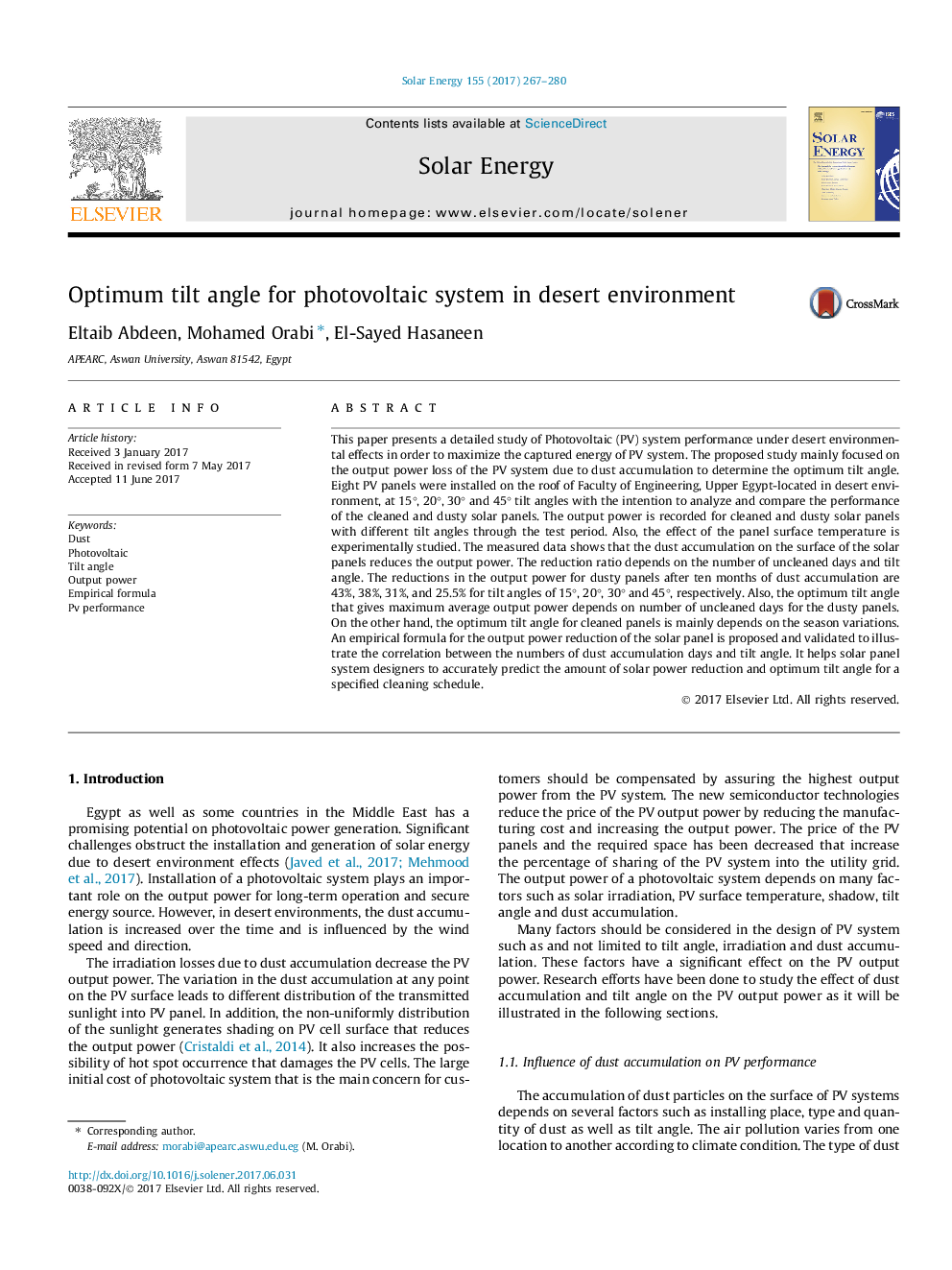| Article ID | Journal | Published Year | Pages | File Type |
|---|---|---|---|---|
| 5450621 | Solar Energy | 2017 | 14 Pages |
Abstract
This paper presents a detailed study of Photovoltaic (PV) system performance under desert environmental effects in order to maximize the captured energy of PV system. The proposed study mainly focused on the output power loss of the PV system due to dust accumulation to determine the optimum tilt angle. Eight PV panels were installed on the roof of Faculty of Engineering, Upper Egypt-located in desert environment, at 15°, 20°, 30° and 45° tilt angles with the intention to analyze and compare the performance of the cleaned and dusty solar panels. The output power is recorded for cleaned and dusty solar panels with different tilt angles through the test period. Also, the effect of the panel surface temperature is experimentally studied. The measured data shows that the dust accumulation on the surface of the solar panels reduces the output power. The reduction ratio depends on the number of uncleaned days and tilt angle. The reductions in the output power for dusty panels after ten months of dust accumulation are 43%, 38%, 31%, and 25.5% for tilt angles of 15°, 20°, 30° and 45°, respectively. Also, the optimum tilt angle that gives maximum average output power depends on number of uncleaned days for the dusty panels. On the other hand, the optimum tilt angle for cleaned panels is mainly depends on the season variations. An empirical formula for the output power reduction of the solar panel is proposed and validated to illustrate the correlation between the numbers of dust accumulation days and tilt angle. It helps solar panel system designers to accurately predict the amount of solar power reduction and optimum tilt angle for a specified cleaning schedule.
Related Topics
Physical Sciences and Engineering
Energy
Renewable Energy, Sustainability and the Environment
Authors
Eltaib Abdeen, Mohamed Orabi, El-Sayed Hasaneen,
